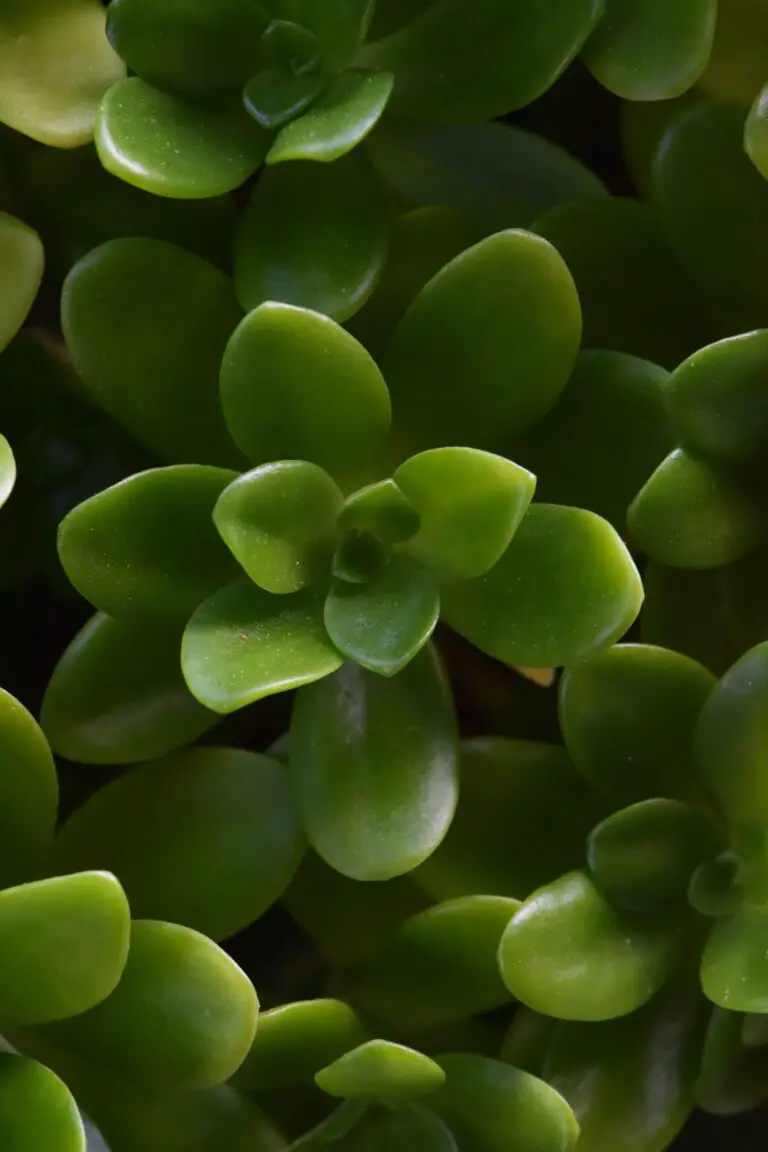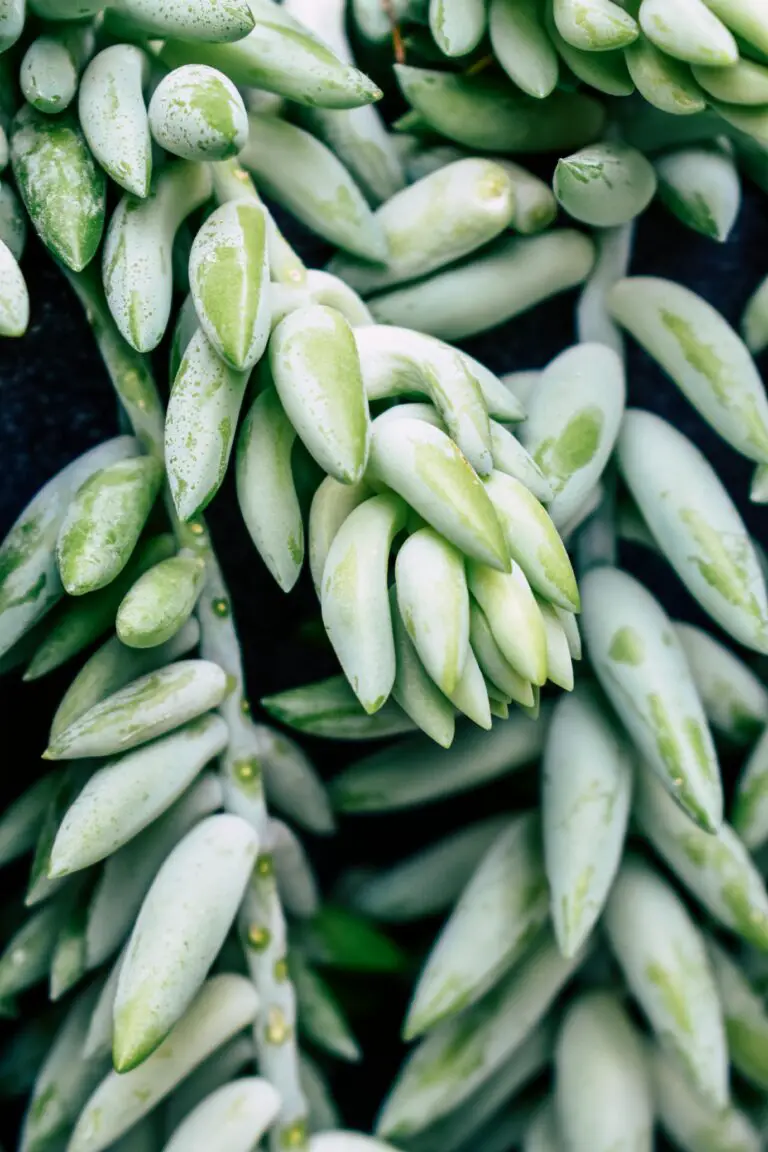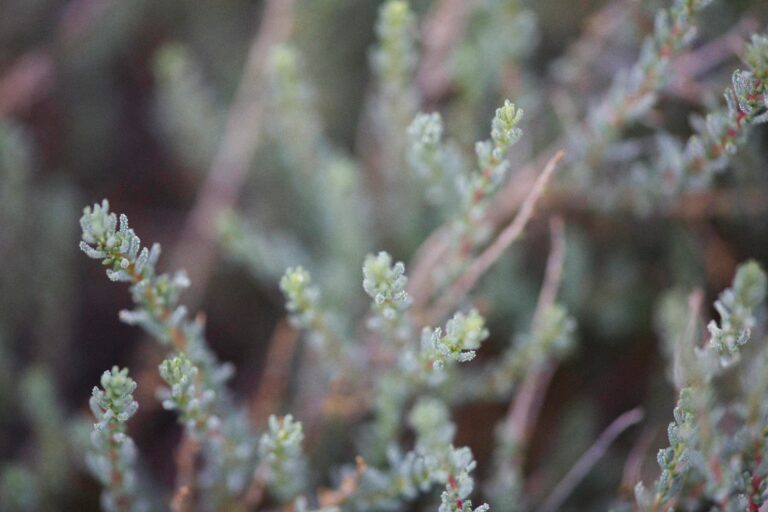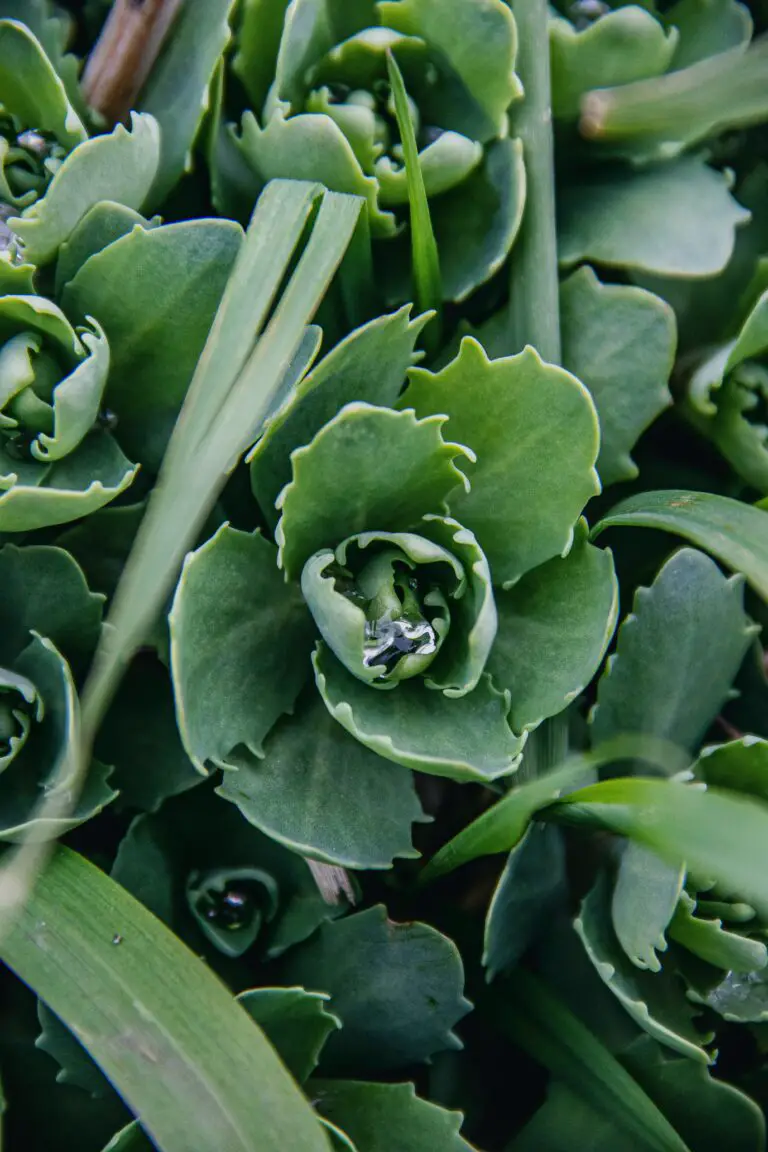Introducing the Sedum Species
Step into the world of Sedum, a genus bustling with variety and vigor. These stonecrop plants have carved their niche in the plant kingdom, capturing the interest of horticulturists and casual gardeners alike. Imagine a family reunion of Sedums: from ground-hugging beauties to ones that stand tall with pride—they have a stature for every spot in the garden!
Renowned for their resilience, Sedums are like the superheroes of the succulent world—battling heat and drought with ease. Picture your garden as a stage where these plants shine throughout the seasons, requiring minimal care yet offering maximal impact. Gardeners sing praises for these rugged charmers, as they transform rocky embankments into luxuriant tapestries of color and texture. Here’s a glimpse into the rising stardom of Sedums in gardens.
Within the extensive Sedum roster, heights vary as much as their vibrant blossoms. Some varieties politely nestle themselves between stepping-stones, rarely peeping above a couple of inches. Others, however, aspire to be the skyscrapers of the succulent domain, reaching for the sky with stalks that can tower up to 3 feet tall! Each species, with its unique height and hue, plays a pivotal role in designing a multi-dimensional garden scene that will have neighbors peeking over the fence.

Cultivating a mix of Sedum heights isn’t just about aesthetics—it’s a strategic chess game with nature. Tall species serve as protective sentinels for their shorter kin, shading them from harsh sunbeams, while ground-level Sedums soften the soil with their thirst-quenching roots, benefiting the entire garden ecosystem. It’s a beautiful synergy, where every inch serves a purpose, just like the myriad heights of Sedums in your enchanted garden tableau.
Typical Growth: How Tall Do Sedum Plants Get?
When it comes to the stature of sedums, prepare to be dazzled by the diversity! Just picture a miniature fairy garden, jeweled with tiny sedums that peek out shyly, barely brushing your ankle. Then, in the same breath, imagine these hardy stonecrop companions reaching for the sun, with some species standing tall enough to waltz right up to your knees! The heights these plants attain are as varied as their vivacious colors.
Let’s get right to the root of it: many sedum species are modest, happily hugging the ground and spreading like a plush, living carpet. Picture the ‘Cape Blanco’ with its silver rosettes, practically whispering to the soil. In contrast, the statuesque ‘Autumn Joy’ sedum bursts into the sky with robust stalks, showing off its crimson blooms like nature’s fireworks.

Curious about what drives these succulents skywards? Factors like sunlight, watering habits, and the battleground of the garden ecosystem all play their part. Ensuring optimal care for your sedum plants can mean all the difference between a sprightly sprite of a plant and a towering green giant.
But it’s not just the care these succulents receive that determines their imperial heights; their genetic blueprints hold ancient secrets to their success. Some species are genetically destined to snake across your garden landscape, while others aim to soar. Discover the art of growing sedum indoors and see how this affects their towering ambition!
Whether you’re nurturing a ground-cover sensation or tending to the taller brethren, recall this – your stonecrop’s height is a tale of its life. It speaks of a journey through sunny days and shadowed nights, through tender love and nature’s trials. Each inch of growth is a chapter of resilience, a testament to the relentless spirit of the sedum family. So next time you gaze upon your succulent sanctuary, know that each plant’s towering tale is as rich and deep as the earth from whence it springs.
Varieties and Their Sizes: The Height Range of Sedum Plants
When it comes to garden showstoppers, Sedum plants, or Stonecrops, are as varied as they are vibrant. In the green tapestry of your garden, these succulents stand out with a remarkable range of heights, making them perfect for creating layers of texture and color. Whether you’re eyeing that sunny spot by the patio or contemplating a living roof, there’s a Sedum variety that fits the bill.

Take, for example, the diminutive Sedum acre, a green gem that barely skims 2 inches off the ground. It’s an ideal choice for tucking into those rocky nooks and crannies or letting it cascade charmingly over a stone wall. Then, there’s the mid-sized Sedum ‘Autumn Joy’, soaring to a statuesque 18-24 inches and crowned with glorious rosy blooms as summer wanes.
For those with a penchant for the dramatic, the tall Sedum telephium varieties stretch up to a substantial 3 feet, transforming into towering spires of blossoms that beckon butterflies by day and moths by twilight. Its commanding presence anchors the back of flower beds or serves as an upright counterpoint to the gentle sway of ornamental grasses.
Now, let’s chat care tips. While these plants are fairly independent, some tender love and guidance can enhance their stature and splendor. Our extensive guide on succulent care dives into the dos and don’ts of nurturing your Sedum companions to their fullest potential.
Eager to learn more about these versatile plants? The diversity of the Sedum family makes them a fascinating study for amateur botanists and seasoned gardeners alike. With sizes ranging from the petite to the grand, there’s always a spot in your personal Eden waiting for a Sedum surprise. So go ahead, let these low-maintenance lovelies take your garden design to new heights—literally!
Cultivating Sedum: Best Practices for Optimal Growth
When it comes to sprucing up your garden with some eye-catching verdure, Sedum plants are an exceptional pick. Known for their drought tolerance and their ability to add a splash of color to rockeries, alpine gardens, and green roofs, these succulent champs are as varied in height as they are robust. From low-growing ground covers to statuesque beauties towering at two feet tall, Sedum offers something for every garden nook. But hold on, how do you ensure these plants reach their height potential and thrive?
Let’s spill the soil secrets first. Sedum is famously partial to a spot where the ground isn’t too keen on holding onto moisture. So, a well-draining soil is your golden ticket to happy plants. A mix of gravel or sand will help prevent those soggy conditions that these succulents just can’t stand. Think about it like this—Sedum loves a soil mimicking its native, rocky habitats, providing the perfect ‘bed’ for growth.
It’s not just about the type of soil, though. The frequency of watering plays a vital role too. Ever seen a Sedum plant try to make it through a waterlogged winter? It’s not a pretty sight! Keep your watering can at bay, my friends. These plants are masters of water storage, so only water when the soil feels dry. In real-life terms, we’re talking about emulating a desert downpour followed by a period of drought—lovingly sporadic is the strategy here.

Lighting is another piece of the puzzle. Sedum is like that friend who loves to bask in the sun at every opportunity. Sunlight is their jam! But don’t fret if your garden is a bit on the shady side. While full sun positions can lead to taller Sedum varieties reaching for the sky, part shade will suffice for some species too. Just remember, less light may mean slightly less height and fewer blooms, but the trade-off is often worthwhile for the right garden aesthetic.
Lastly, let’s circle back to care tips affecting Sedum’s stature. Overfeeding with high-nitrogen fertilizers can lead to leggy, weak Sedum that flops over rather than stands tall. Stick to a balanced fertilizer sparingly used, or better yet, take advantage of compost for a slow-release nutrient bonanza that encourages sturdy, healthy growth. Interested in delving deeper into care tips for happy Sedum? Check out how to keep these succulent beauties flourishing all while ensuring their safety around your furry friends.
Adopt these best practices and watch your Sedum soar to new heights—or maybe just a delightful, compact clump if that’s your garden style. Either way, nurturing these diverse plants can become a splendidly simple affair with just a bit of know-how.
Landscaping with Sedum: Incorporating Height for Design
Towering spires of Sedum ‘Autumn Joy’ holding court with their blush-pink blossoms, dwarf clumps of ‘Dragon’s Blood’ Sedum carpeting the underfoot with ruby-red leaves, and the whimsical, cascading trails of ‘Burro’s Tail’ seducing the eye from hanging baskets—Sedum plants are a true garden chameleon when it comes to height. But just how tall do Sedum varieties grow? And how can you weave these variegated heights into a harmonious landscape design? Let’s dig in.
Picturing a Victorian terraced garden, the Sedum spectacle begins at ground level. Here, creeping varieties like Sedum acre, no taller than a few centimeters, create a lush, evergreen tapestry. Why not use this mossy mat as an enchanting border along the walkways, or to fill the otherwise barren spaces between stepping stones? It’s low maintenance and exceptionally resilient to foot traffic—ideal for busy gardens where functionality meets beauty.
Transitioning up, you might encounter a midsized marvel like ‘Purple Emperor’, reaching for the sky at about one foot high. It’s a floral fascinator, perfect for punctuating balcony containers or softening the edges of your urban garden. Planted en masse, this variety can deliver an impressive display, showing just how adaptable the Sedum family is to different height needs in landscaping scenarios.
To achieve vertical drama, meet the giants in the family! Varieties such as ‘Matrona’ or the aforementioned ‘Autumn Joy’, which stand tall at two feet or more, serve as excellent backdrops for perennial borders. Imagine the stately presence of these higher varieties as they provide structure to your garden throughout the seasons—their succulent leaves and prominent flower heads warranting second glances from passersby.

Real-life examples are plentiful: a seaside garden harnessing the salt-tolerant Sedum reflexum to stabilize slopes, an urban hardscape adorned with vertical installations festooned with Sedum morganianum, or a prairie-inspired xeriscape utilizing the drought-tolerant ‘Brilliant’ to foster biodiversity.
Integrating Sedum of varying heights isn’t merely a matter of aesthetic appeal. It’s a strategic play on depth, texture, and seasonal interest. Whether you’re crafting a quiet corner for reflection or a vibrant vista to entertain guests, these stonecrop sensations elevate the art of gardening to new horizons. By thoughtfully curating their heights, you create not just a garden, but an enduring masterpiece worthy of any landscape enthusiast’s admiration. So why settle for flat when you can have fabulous? Let Sedum take your garden from simple to show-stopping with their sigh-inducing heights.
Common Challenges Affecting Sedum Growth
Imagine nurturing your Sedum plants, envisioning a garden filled with their diverse heights and vibrant colors, only to find them struggling to thrive. This can be disheartening for any plant enthusiast. Sedums, also known as Stonecrop plants, are generally hardy and unassuming; however, they are not without their share of adversaries. In this section, we dive into the potential hurdles that could stand between you and the lush, statuesque Sedum garden of your dreams.
The Battle Below: Soil and Roots
Often, the root of the problem, quite literally, is the soil. Hard, unyielding clay or overly sandy earth can be a Sedum’s downfall. Their roots prefer a more hospitable, well-draining environment. Picture this: after a rainfall, water pooling around the roots can lead to root rot, stifling the stonecrop’s growth. Ensuring the proper soil mix not only facilitates a favorable start but also sets the stage for reaching their famed height.
Unseen Foes: Disease and Pests
Consider the perils of the unseen—fungal diseases and pesky insects that prey on your Sedums. One day you might notice the leaves mottled with powdery mildew or the stems wilting despite adequate care, signaling that your plants are under siege. These ailments, if left unchecked, can severely hinder your Sedum’s ability to reach its full towering potential.
Climate Conundrums: Weather Woes
Let’s not overlook the whims of Mother Nature. Sedums are robust, yes, but extreme weather conditions can test their limits. Imagine a sudden frost nipping at the budding tips of your ‘Autumn Joy’ Sedum, stunting its growth spurt. Even these stoic plants have their climatic preferences, favoring a temperate range to stretch towards the sky.
By understanding and addressing these common challenges, you can better equip your Sedums to flourish to their varied heights. Remember, the tallest Sedums are not just a product of genetics, but also the tender, watchful care of the gardener. Now, let’s take a moment to visualize these resilient beauties in their glory through a short video that provides insight into the world of Sedum growth challenges.
Frequently Asked Questions

Just How Tall Can Sedum Grow?
Ever wondered if your Sedum could tower over your garden gnome? Well, it’s possible! With varieties reaching the lofty heights of two to three feet, imagine a ‘Matrona’ sedum standing tall, summoning pollinators from afar. It’s not just folklore; these are real garden spectacles!
Are All Sedums Short and Ground-Hugging?
While some types think life is better close to the earth, like the ‘Cape Blanco’ with its cozy quarter-inch height, not all stonecrops want to hug the ground. In fact, ‘Autumn Joy’ sedum will push the limits, aspiring to rise up to two feet. That’s like comparing a bunny hop to a kangaroo leap in the world of Sedum heights!
Can Sedum Survive in the Wild Highlands?
Yes, they can! Just picture the hardy ‘Purple Emperor’, with its regal hues, perched on a rocky outcrop, surveying the valley below. Nature’s skyscrapers, they’re adept at thriving in altitudinous zones, sometimes seeming to touch the sky just like the mountain peaks around them.
Will Sedum Grow Taller with More Sun?
Think of Sedum like solar-powered superheroes. With enough sunlight, some species like ‘Brilliant’ sedum surge upward, soaking in rays and reaching for the stars. Less light might mean a more humble stature, but under the golden sun, their true height potential is unleashed!



